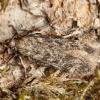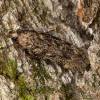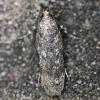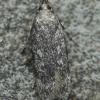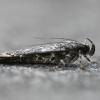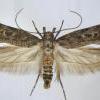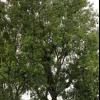35.106 Gelechia turpella ([Denis & Schiffermüller], 1775)
Status and Distribution
Rare, restricted to several widely scattered locations to the south and east of a line from the River Severn to the Humber Estuary. Although discovered in Wiltshire for the first time in 2014, most records relate to sightings with a more easterly bias. Since 1990, the moth has been located in only four counties (Kent, Middlesex, Surrey and Wiltshire).
Recent research has found that the sole record from Hampshire relates to Gelechia nigra and not G. turpella (R. J. Heckford pers. comm.) casting some doubt on more westerly records, that was until the moth was found in north Wiltshire. Historically it has been recorded from two separate parts of North Somerset (VC6), Stawell (ST33) and Keynsham (ST66). The latter site, listed in Barnett, R. J. et al (2008) Moths of the Bristol Region, together with the recent north Wiltshire records, suggests the Keynsham records are acceptable. The more westerly site in Stawell is less certain and searches for a supporting specimen would be advisable.
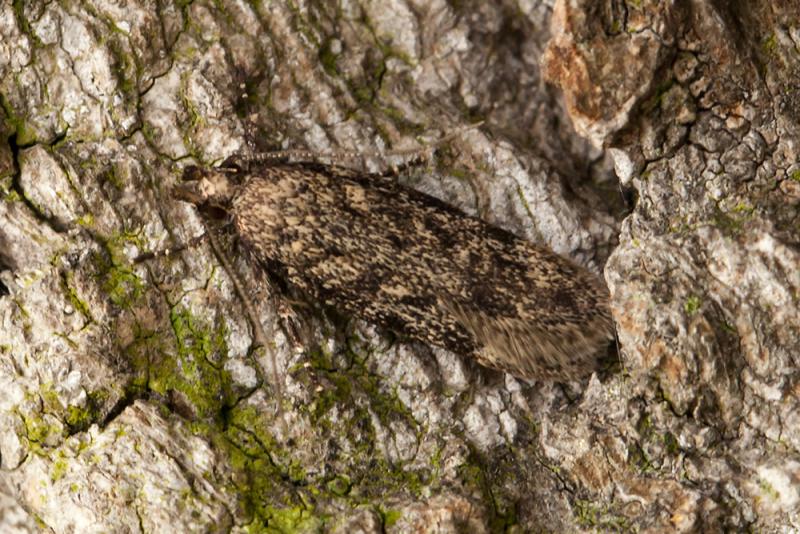
Provisional map
Foodplant and Larval Feeding Signs
Populus nigra (black poplar), see plant distribution map, including var. italica (lombardy poplar). Found resting on a Salix fragilis (crack willow) trunk in Kent suggesting this may also be a possible foodplant. In Europe also reported from Populus pyramidalis (bolle's poplar), P. balsamifera (balsam poplar) and P. laurifolia (laurel poplar).
On the continent the larva feeds between rolled leaves. At a site in Kent on lombardy poplars, recently vacated upward spun pods, with only the inner surfaces consumed, were found with larva nearby apparently having moved there ready to pupate.
Habitat
Finding the Moth
Larva: in Europe, reported to feed within joined or rolled leaves of the foodplant. At a site in Kent, where larvae were found nearby under bark, poplar leaves had been spun upward into pods and only the inner surface was consumed. Although these were all vacated it was felt they may well have been constructed by G. turpella larva.
Adult: most often recorded when found on the trunks of old poplars where it can be well concealed and will run rapidly on the surface of the tree if disturbed. Also comes to light on occasions.
Similar Species
A large, dark brown species which can superficially resemble Hofmannophila pseudospretella when observed resting on tree trunks. The obvious blackish-brown triangular tufts on the front of segment two of the palps and the narrower forewings readily distinguish it from that species. Gelechia muscosella and G. cuneatella are generally smaller but there is some overlap in size. Both have a slightly narrower and more elongate wing shape than G. turpella while G. muscosella lacks the distinctive triangular brown scales on segment two of the palps. Dissection may be needed to separate this group if the specimen is particularly worn.
Single brooded in July. There are a few historic records with reports of the moth occurring at the end of May and in early June but it has not been possible to rule out the possibility that they were bred specimens.
Earliest: 24th June 1998 VC17
Latest: 9th August 1955 VC15

